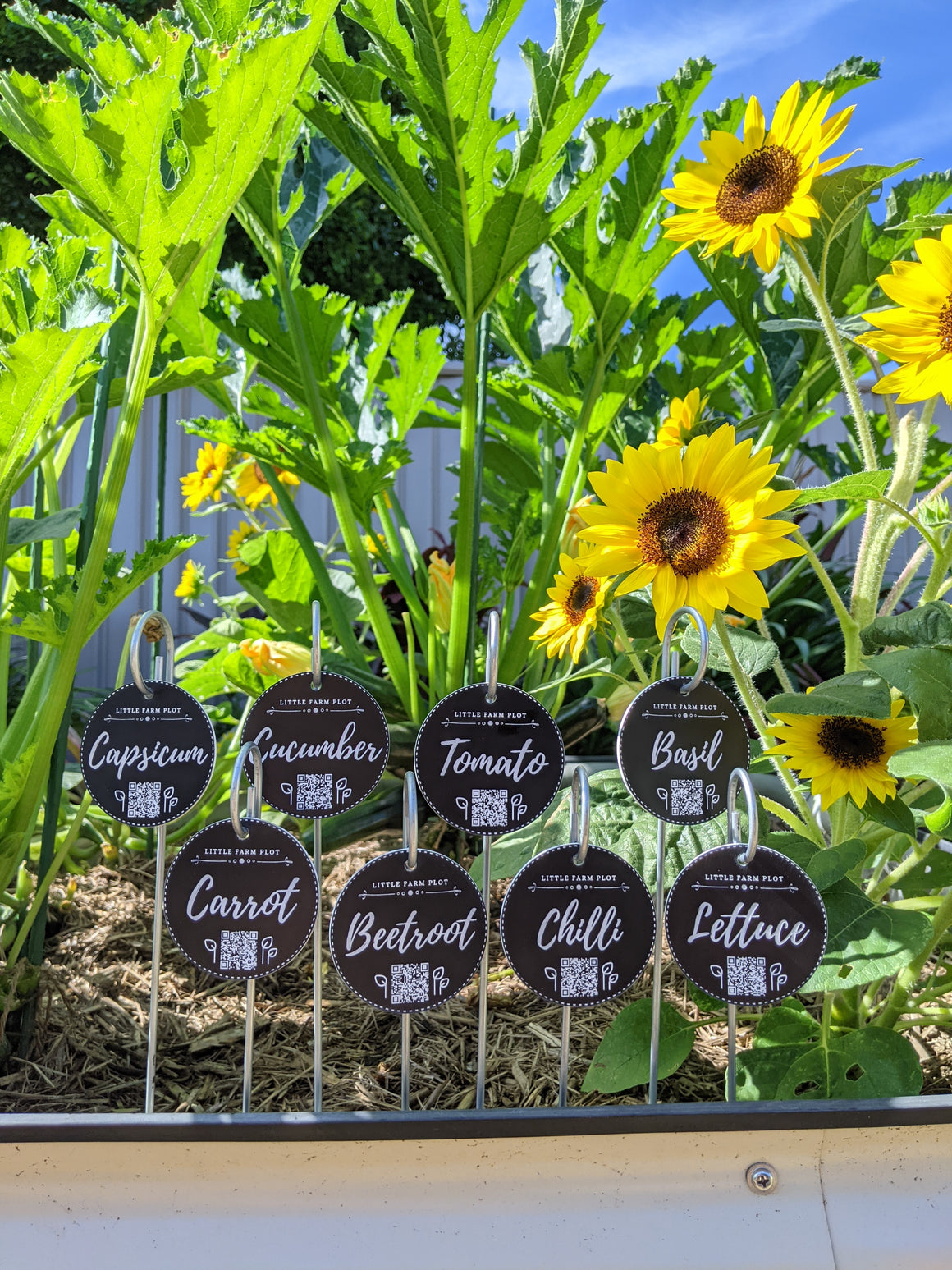WE ARE CURRENTLY NOT TAKING ONLINE ORDERS. CONTACT US FOR PURCHASE ENQUIRIES.
Growing Guide: Strawberry
Strawberries are the perfect plants for every backyard farmer to grow! They do wonderfully in anything from hanging baskets, small containers to large gardens! The excitement of venturing out to your garden and picking a fresh strawberry is indescribable! You'll be lucky if any make it back into the house because you will want to eat them as soon as you pick them!

Plant
- Strawberries are a perennial plant which means it will grow and bear fruit over a number of seasons. If your plants are healthy they will last up to 3 years. After this time they will start to decline and its best to replant.
- Strawberry plants feature a 'crown' in the centre which is the 'parent' plant and 'runners' that shoot out from the crown which will grow a 'daughter' plant.
- Strawberries are best grown from seedlings or from runners cut from other healthy strawberry plants.
- You can plant strawberries just about any time of year however if you live in cooler climates its best to plant in Spring.
- Those who live in tropical climates should choose a location that provides some shade during the peak of summer months.
- Strawberries like a rich soil and any preparation will be returned with a strong crop. Prepare soil with organic compost and manure at least a week prior to planting.
- Strawberries like airflow, ideally space plants 30-60cm apart.
- Companion planting: onions, borage and beans. Avoid planting next to all members of brassica family (cabbage, broccoli, spinach etc).

Grow
- Strawberry plants require plenty of water. In the first month and during fruiting, give plants a deep watering 2-3 times per week. You may need to increase this during hot Summer months or while producing fruit.
- Plants will also benefit from a liquid fertiliser once a fortnight, especially when fruiting.
- If you are growing your strawberries in pots or containers, you may need to increase watering to 4 times per week. Test the soil with your finger and water when it feels dry to touch.
- Mulch around the crown of the plant up to 5cm in depth. This will prevent the soil from drying and avoid fruit laying on the soil and rotting.
- As the plant offshoots runners, cut them off to allow the plant to concentrate its energy on producing fruit.
- You can grow new plants from the runners. The best method to do this is to place the tip of the runner into a small pot while still attached to the parent plant. Once it has established roots you can cut it and transplant.

Harvest
- Strawberries will be ready to pick when they are a beautiful deep red, usually around 4 weeks after the flower blooms.
- Birds, ants and snails are prone to feast on your strawberries and you may need to protect them with netting during the fruiting season.
- Avoid disease by removing fruit before it rots and keep the mulch up as it breaks down.
- After your plants have finished fruiting, tidy up the plant by cutting back dead leaves and runners and apply fresh mulch.
Varieties
Strawberry plants come in a huge variety, offering different fruit size, flavour, flower colour and fruiting season. If you have the space to grow a range of varieties, choose a selection that fruit in different seasons to allow you to have a harvest most of the year! Strawberry varieties also differ in the size of the fruit. When visiting your local nursery for seedlings, check these details before purchasing your plants!
Sign up for special VIP offers & be the first to know when we launch new products!
© 2025 Little Farm Plot.
Powered by Shopify



